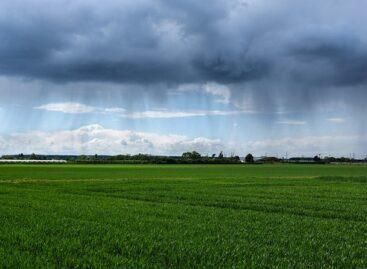In Europe, the year started with favorable weather for autumn sowing
The year began with favorable weather for autumn sowing in Europe, but the unusually mild weather may cause problems in the coming months, the National Meteorological Service wrote in its international agrometeorological analysis on Tuesday.

(Photo: Pixabay)
According to an analysis published on the organization’s website, the unusually warm August was followed by a relatively cool period in most of Europe. With a quick transition in mid-December, the weather turned much milder, and the new year brought record-warm temperatures. Due to the heat, very little snow accumulated in the Alps until mid-January, so if the snow thickness does not increase during the rest of the winter, the water supply for irrigation may become a problem in the spring, they pointed out. Regarding the temperature, they wrote that between the beginning of December last year and the middle of January this year, the weather was 2-4 degrees Celsius milder than the long-term average in most parts of Europe. It was 4-6 degrees warmer than usual in eastern Turkey, northwestern Romania, and in places in Ukraine and the Balkan Peninsula. However, in the north – in Sweden, Norway and the eastern part of Russia’s European territory – it was 2-4 degrees cooler than average. So far, frost damage has hardly occurred in Europe, only in the Volga region it was so cold – associated with relatively little snow – that autumn crops could be damaged.
It was noted: Much more precipitation than average fell in the largest area of Europe, more than 50 percent fell in a large area
However, up to 50 percent less precipitation fell than usual on the eastern coast of Spain, in some regions of Italy, in places in Greece and Bulgaria, in the largest part of Turkey, in the southern part of the European territory of Russia, and on the Norwegian coast. The lack of precipitation characteristic of the southeastern part of Spain and the southern part of Italy, as well as Bulgaria, does not cause problems for now, but in Turkey, abundant precipitation would be needed to prevent further damage.
Weather is a problem all over the world
In the United States of America, California has been experiencing stormy weather since the last week of December, which is now resulting in extensive flooding in the state, which was struggling with a prolonged and severe drought last year. The drought has eased significantly in Arizona and New Mexico, but at the same time mild, dry weather prevailed in the central states of the country in the first half of January. In the north-central areas, a significant snow cover protects the autumn crops, but in the central and southern areas of the Great Plain, the crops are exposed to the extremes of the weather.
In December in China, the weather was dry and cold in the eastern and southern regions of the country, and overall only half of the usual amount of precipitation fell at this time.
The extensive floods that hit Australia’s east coast last autumn caused serious damage, but drier than average weather in December helped harvest wheat, barley and canola. In the first half of January, drier than average weather helped the sowing of late summer crops, but at the same time there is still enough moisture in the soil for the development of crops grown without irrigation, and the reservoirs also contain plenty of water for crops grown with irrigation. In South Africa, warm, mostly sunny weather helps the development of summer plants, for which there is a sufficient amount of moisture available in the soils. In Argentina, the weather in the central part of the country is warmer and drier than usual, which means serious stress for the early summer crops that are already in the reproductive phase. In the north, in the main cotton growing areas, the temperature reached 40 degrees in the first week of the month, then the heat eased and precipitation came, which was very good for the newly sown corn and other summer crops. In Brazil, the southern productive areas of the country have been characterized by a prolonged drought, while the northern ones have recently been characterized by extensive, heavy rains. The heat above 30 degrees helps the rapid development of summer plants, but the loss of moisture due to evaporation is also very high – wrote the National Meteorological Service in its international agrometeorological analysis.
MTI
Related news
China imposes anti-dumping measures on wine spirits imported from the EU
China’s Ministry of Commerce announced anti-dumping measures on wine spirits…
Read more >The success of Hungarian-developed products with reduced deuterium content in China
HYD Cancer Research and Drug Development Ltd.’s Preventa deuterium-reduced drinking…
Read more >Agrometeorology: showers, thunderstorms may arrive in several waves
Showers, thunderstorms may arrive in several waves, and the extreme…
Read more >Related news
Corporate leaders’ commitment to sustainability at record level
According to the latest data from the K&H Sustainability Index,…
Read more >FAO food price index rose slightly in June due to higher prices of meat, dairy products and vegetable oils
The Food and Agriculture Organization of the United Nations (FAO)…
Read more >What can cause the price of a wine to increase tenfold?
There are fewer of them worldwide than the number of…
Read more >






